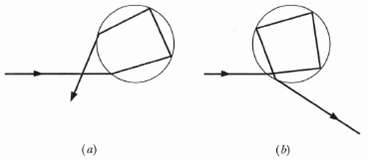The primary rainbow described in Problem 71 is the type commonly seen in regions where rainbows appear.
Question:
The primary rainbow described in Problem 71 is the type commonly seen in regions where rainbows appear. It is produced by light reflecting once inside the drops. Rarer is the secondary rainbow described in Section 33-8, produced by light reflecting twice inside the drops (Figure a).(a) Show that the angular deviation of light entering and then leaving a spherical water drop is ? dev = (180?) k + 2?i - 2(k + l) ? r, where k is the number of internal reflections. Using the procedure of Problem 71, find the angle of minimum deviation for(b) Red light and(c) Blue light in a secondary rainbow.(d) What is the angular width of that rainbow (Figure d)? The tertiary rainbow depends on three internal reflections (Figure b). It probably occurs but, as noted in Section 33-8, cannot be seen because it is very faint and lies in the bright sky surrounding the Sun. What is the angle of minimum deviation for?(e) The red light and(f) The blue light in this rainbow?(g) What is the rainbow's angular width?
Step by Step Answer:

Fundamentals of Physics
ISBN: 978-0471758013
8th Extended edition
Authors: Jearl Walker, Halliday Resnick





